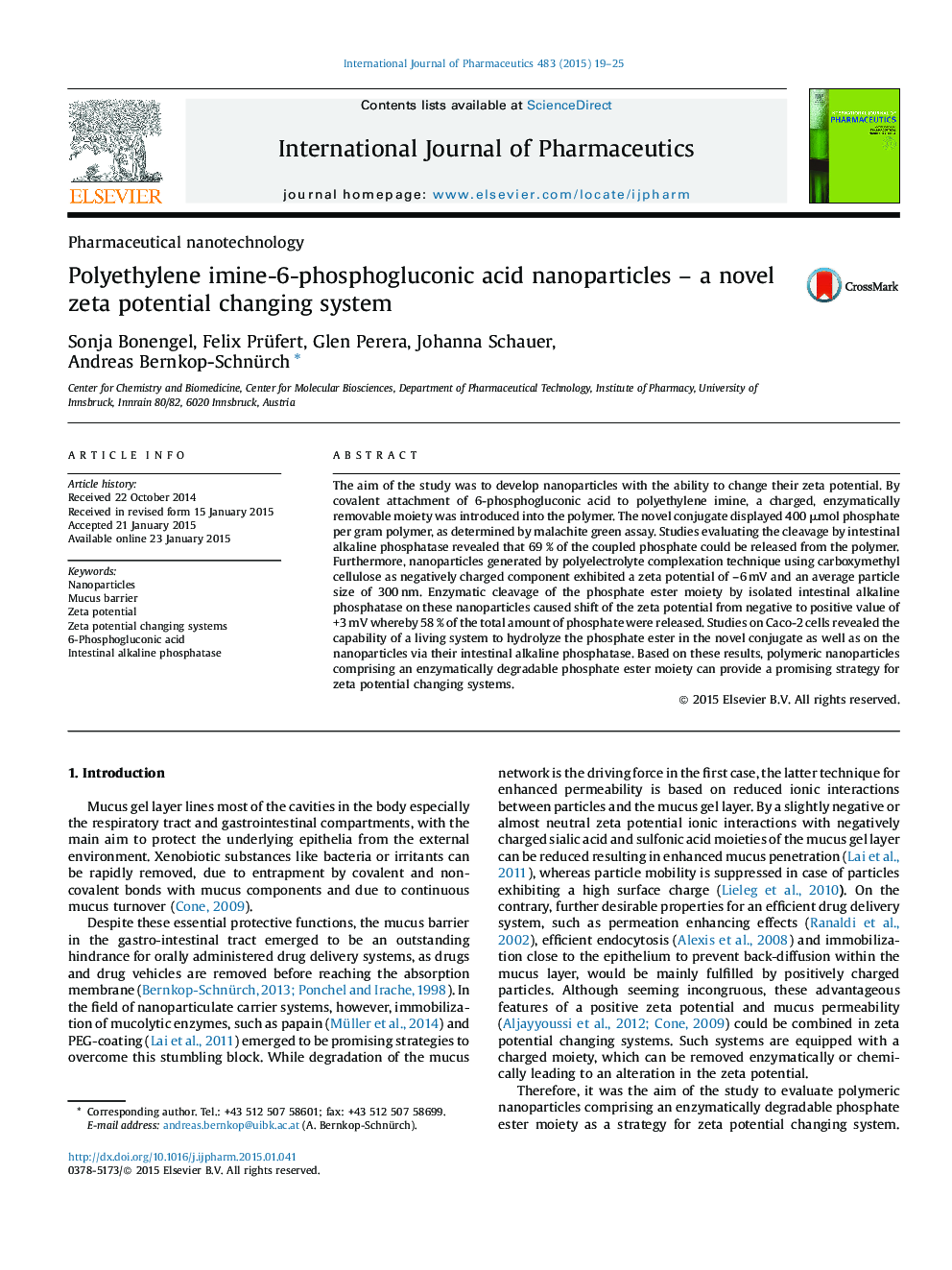| Article ID | Journal | Published Year | Pages | File Type |
|---|---|---|---|---|
| 2501493 | International Journal of Pharmaceutics | 2015 | 7 Pages |
The aim of the study was to develop nanoparticles with the ability to change their zeta potential. By covalent attachment of 6-phosphogluconic acid to polyethylene imine, a charged, enzymatically removable moiety was introduced into the polymer. The novel conjugate displayed 400 μmol phosphate per gram polymer, as determined by malachite green assay. Studies evaluating the cleavage by intestinal alkaline phosphatase revealed that 69 % of the coupled phosphate could be released from the polymer. Furthermore, nanoparticles generated by polyelectrolyte complexation technique using carboxymethyl cellulose as negatively charged component exhibited a zeta potential of –6 mV and an average particle size of 300 nm. Enzymatic cleavage of the phosphate ester moiety by isolated intestinal alkaline phosphatase on these nanoparticles caused shift of the zeta potential from negative to positive value of +3 mV whereby 58 % of the total amount of phosphate were released. Studies on Caco-2 cells revealed the capability of a living system to hydrolyze the phosphate ester in the novel conjugate as well as on the nanoparticles via their intestinal alkaline phosphatase. Based on these results, polymeric nanoparticles comprising an enzymatically degradable phosphate ester moiety can provide a promising strategy for zeta potential changing systems.
Graphical abstractFigure optionsDownload full-size imageDownload high-quality image (234 K)Download as PowerPoint slide
